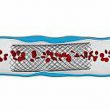Article This multicenter randomized control study with placebo was designed to determine the risks and benefits of double antiaggregation for longer than 12 months post DES stenting. 9961 patients were randomized to continue on placebo or thienopyridine after 12 months. Thienopyridine reduces the incidence of in-stent thrombosis (0.4% vs 1.4%; p<0,001) and cardiovascular events (4.3%...
ISAR-SAFE: 6 vs. 12 month clopidogrel administration after DES implantation
The aim of this randomized double blind control trial was to validate the safety and efficacy of 6 months vs. 12 months clopidogrel treatment in patients receiving DES. Primary end point was a combination of death, infarction, in-stent thrombosis, stroke and major bleeding. Secondary end point was the individual analysis of each one of the...
XIMA: Randomized prospective study comparing everolimus eluting stents versus conventional stent implantation in octogenarians.
Background: Octogenarian patients represent an increasingly growing population. In addition, this age group has a higher proportion of co-morbidities with more extensive and complex coronary disease. However, they have often been excluded from major studies, whose average age is usually 60 years. Despite having a more complex coronary anatomy, the role of pharmacological stent (DES)...
ISAR-LEFT MAIN 2: Everolimus-eluting stents versus Zotarolimus eluting stents in the treatment of the unprotected left coronary trunk.
Summary: Second-generation drug-eluting stents have shown better results than their predecessors. In this study we compare two second-generation drug stents in patients with unprotected left coronary trunk injuries. Methods and results: 650 patients with unprotected trunk injury were randomized to either XIENCE V (everolimus eluting) or RESOLUTE (zotarolimus eluting) stents. The primary endpoint was the...
DEMONSTR8: better endothelial coverage by OCT for the new DES
There is still concern about the safety of drug-eluting stents (DES) due to the possibility of late and very late thrombosis. Dual antiplatelet aggregation for a year is recommended for patients receiving DES. The objective of this study was to test the non-inferiority of a new drug-eluting stent in terms of endothelial coverage after 3...
BIOFLOW II. Stent eluidor de sirolimus com polímero degradável.
This non-inferiority design study compared the sirolimus-eluting stent with biodegradable polymer versus everolimus-eluting stent with permanent polymer in de novo coronary lesions. The primary endpoint was late lumen loss at nine months. We Included 440 patients with stable coronary lesions randomized 2:1 to receive the new sirolimus eluting stent with biodegradable polymer versus everolimus eluting...
RIBS V: Pharmacological balloon vs second-generation drug-eluting stent in the treatment of BMS restenosis
The ideal therapy for treating in-stent restenosis continues to be debated . The pharmacological balloons showed good results in this context, but no direct comparisons available of pharmacological balloonsversus second-generation DES.This prospective, multicenter randomized 189 patients with in-stent restenosis of conventional stents receiving pharmacological balloon or everolimusDES.The primary endpoint was angiographicat 9 months spotting a...
ARCTIC-INTERRUPTION: 1 years versus 2 years of double anti-platelet
This study randomized 1259 patients to receive one year versus 2 years of double anti anti-platelet after implantation of a drug-eluting stent. The primary end point was a composite of death, myocardial infarction, stroke, stent thrombosis, and urgent revascularization that were equivalent between the two schemes. There was a trend to a higher rate of...
2nd-generation drug-eluting stents, results for “real” patients at two years
Original title: Clinical Outcome Following Stringent Discontinuation of Dual Anti-Platelet Therapy After 12 Months in Real-World Patients Treated With Second-Generation Zotarolimus-Eluting Resolute and Everolimus-Eluting Xience V Stents: Two-Year Follow-up of the Randomized TWENTE Trial. Reference: Keneth T, Hanim S, et al. J Am Coll Cardiol 2013. Article in press. In recent years there have been new drug-eluting...
Everolimus eluting stent in total occlusions
Original title: Safety and Effectiveness of Everolimus-Eluting Stents in Chronic Total Coronary Occlusion Revascularization Results From the EXPERT CTO (Evaluation of the XIENCE Coronary Stent, Performance, and Technique in Chronic Total Occlusions) Multicenter Trial. Reference: David E. Kandzari et al. J Am Coll Cardiol Intv. 2015, on line before print. The aim of this study was to evaluate...









